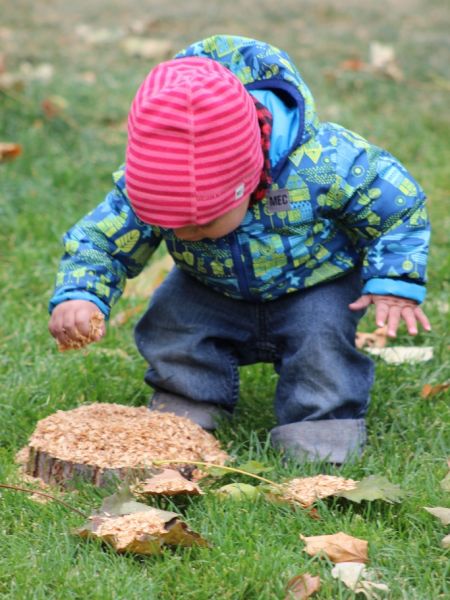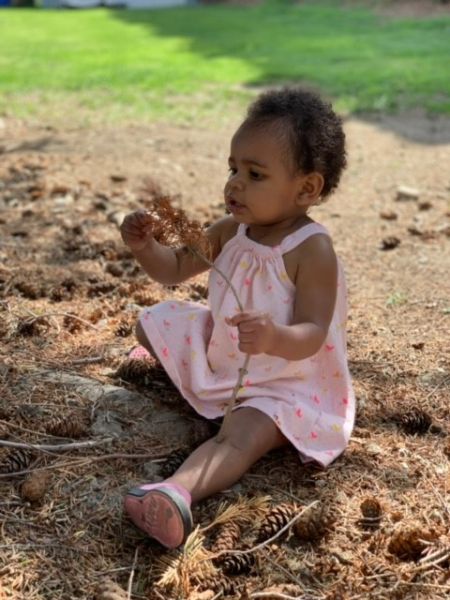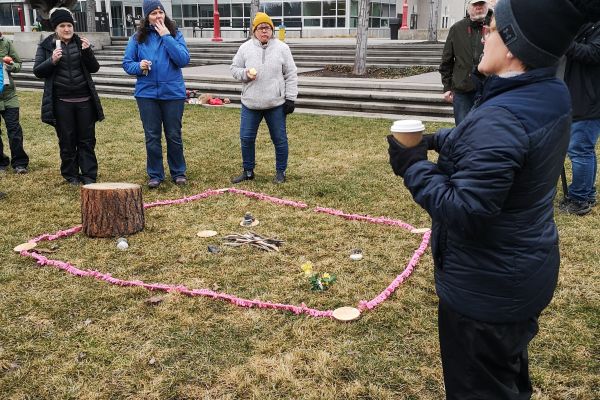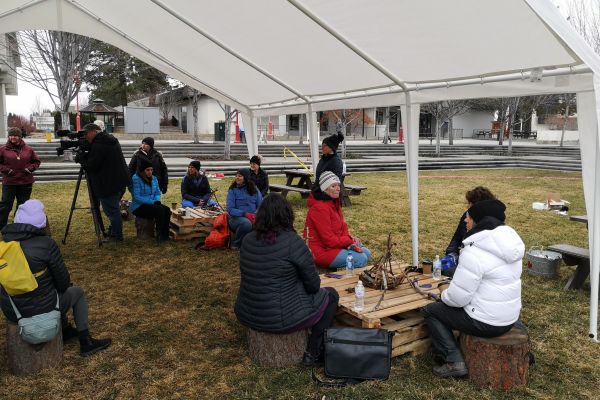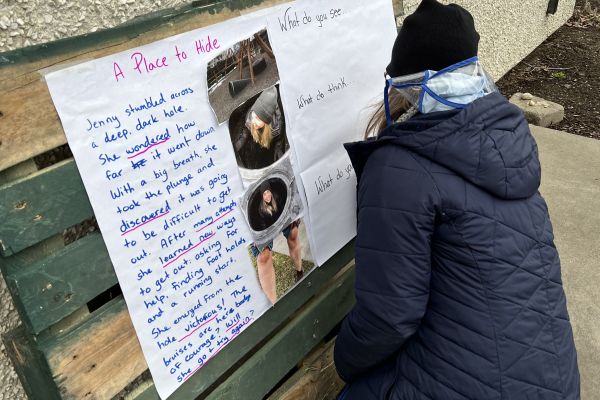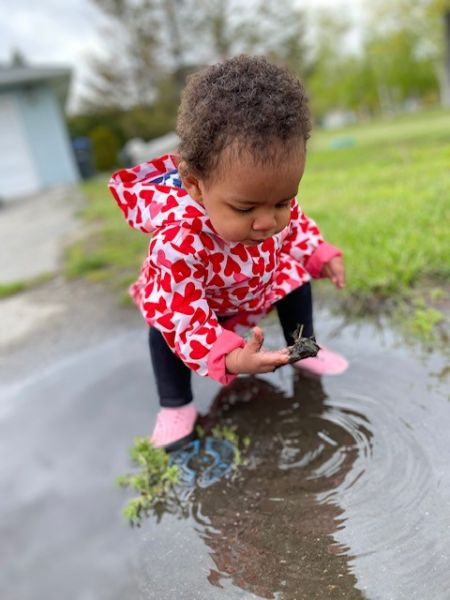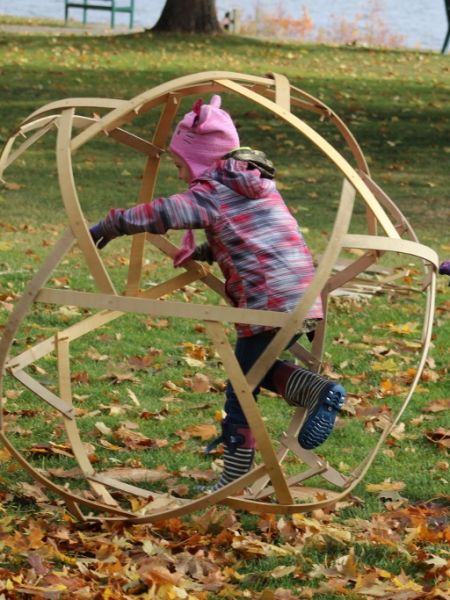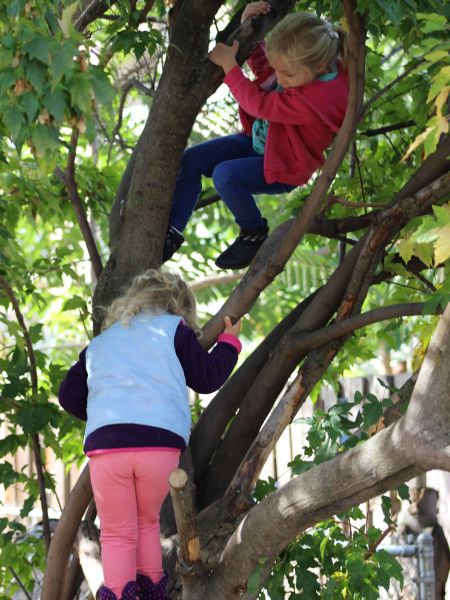Outdoor Pedagogy in Early Childhood Education: From Colleges to Communities
This project aims to increase outdoor pedagogy in college ECE programs and their communities. This will be achieved by engaging faculty in an outdoor pedagogy teaching and mentoring model that will then be applied with students, directors, educators and children in their community early learning and child care programs.
Play is in peril, especially as it relates to access for child-led outdoor play and experiences. This is despite children having the right to play and the research that articulates outdoor pedagogy is foundational for children’s healthy development, including contributing to fostering values, attitudes, skills, and behaviours towards themselves, others, and their environment.
In a study conducted between 2015-2018, survey results from 896 early learning and child care educators indicated that 89 percent of the respondents had not engaged in studies or training on outdoor pedagogy. Seventy-two percent indicated that they lacked knowledge and experience in designing and implementing programming specific to outdoor pedagogy. Another study examined the number of explicit outdoor pedagogy courses available in college ECE programs. Of the 100 programs in Canada, only five had specific courses. Thirty-three colleges had outdoor play embedded in other courses, such as in health and safety courses. No practicum had outdoor play requirements.
In collaboration with faculty from Bow Valley College, Saskatchewan Polytechnic and New Brunswick Community College, this project addresses two major obstacles that are impeding outdoor pedagogy in ELCC programs. They are the lack of access to:
- Outdoor pedagogy training and resources available for early learning and child care students and professionals.
- Explicit outdoor pedagogy courses in College ECE programs and practicums.
Addressing these issues may positively change the attitudes of regulators, ELCC professionals, families and children who perceive outdoors as less important than indoor programming. Currently, ECE graduates and employees largely lack the training to counter these attitudes and advocate for more outdoor play.
The project will utilize a training and coaching model that will support college ECE faculty, their students and designated ELCC programs in gaining knowledge and skills needed to design and implement outdoor pedagogy environments. This is foundational to scaling the model of change to a national level, beginning with colleges.
We would like to thank the Lawson Foundation for funding this three year research project in collaboration with Bow Valley College, Saskatchewan Polytechnic, and New Brunswick Community College.
Videos
ECE Outdoor Pedagogy Study Tour 2022
Intergenerational Learning - Enriching the Lives of Children and Seniors
Beyond the Fence
All Season Outdoor Play
Blogs
Articulating Change: Musings About my First Dance with Evaluation in Applied Research by Deidre Craig, Saskatchewan Polytechnic
When this project began two years ago, I could not have imagined the breadth and depth of learning that I would be claiming as my own. I knew I would learn more
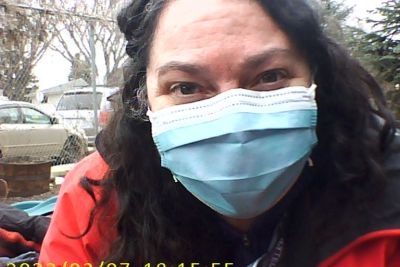
about applied research in outdoor pedagogy. I knew I would become a stronger advocate for outdoor pedagogy. I knew that I would engage my students in outdoor pedagogy. What I did not recognize was that amid all those parts of this project, I would also become a change agent for teaching and learning practices. An “instigator”, as noted in our Community of Practice, perhaps or more appropriately, an encourager, risk taker, and model in what could be. I did not, at that starting point, recognize that planning for outdoor experiences for and with my students meant that I would be articulating an experiential focus in teaching and learning and relishing in the practice of that naming. That articulation has become pivotal in conversations this fall within my college community and was a key part of discussions with the Lawson Foundation Evaluators when we gathered in New Brunswick in mid-November.
From Here to There
When I began teaching post-secondary Early Childhood Education courses eight and a half years ago, I followed what I knew. A teacher or instructor practices from a standing position at the front of a class. It took exactly one class for me to figure out that this was not my preferred way of being. I come to education from a
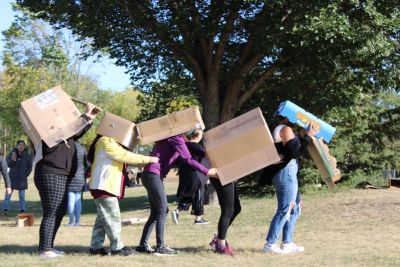
background of therapeutic helping, using play, therapeutic experiences, and creative arts to help children cope, all in the context of relationship. This front of the class format seemed impersonal and one-way to me. I did not yet have ways in which to articulate why it did not feel right for me. For the second class I brought a rolling suitcase full of props. Inside were picture books, play dough, markers, a large roll of paper, construction paper, magazines, scissors, glue. I set up the room with We would create, collaborate, and discuss what we believed, and knew about children. This was co-creation. We were articulating our new learning together. After a couple of years of this practice, I started taking my students outside for short experiences, to find an element in nature that represented something important, to practice observation skills by watching a neighbour of the college mow his lawn in the evening, to experience team building activities and provocations. It felt radical, this leaving the four walls of the classroom. And yet, I knew it was good. I noticed a difference in the way the students engaged with one another, with me, and with the content. I noticed a depth in their storytelling. But it was still infrequent. I was however, beginning to articulate a change in my practice.
Flash forward to my involvement with this project. An invitation, an expectation to take my teaching and learning outdoors. An expectation to sit with the wonder and the curiosity that I had innately tried and had not yet claimed as fully my own in the naming because I was not yet fully practicing it. The ‘it’ I discussed was not just outdoor play, but outdoor pedagogy and part of the project would then hold an expectation to evaluate the change process. An expectation to make my learning, this change process, visible. An expectation to accept the invitation to engage with others who would ask deep questions. An opportunity to articulate.
Evaluation in Applied Research
Part of the typical process of applied research is an evaluative process. In larger projects this is often completed by an external evaluation team. For our project we have a couple of different kinds of evaluation processes. Internally we have a Self-Study evaluation process where external evaluators review our progress and engage in interviews as coaches or critical friends. Within the broader research, the Lawson Foundation have an external evaluation team who visit the projects, engage in interviews, share their findings which may form opportunities for clarity or further work as the projects continue. Through the course of listening to project participants articulate their experiences, they are building a story. They are looking for “whether, why, and how” (Levine, 2022, para 1) goals are achieved. Typically, evaluators work to determine what’s been happening, why it’s been happening, and why does it matter and what comes next? (Levine, 2022). This slowly building narrative is important in creating the story that will be written and shared beyond the experience of the individual participants. There is a goal toward advancement and moving forward, so the stories must be told and shared with a questioning lens.
Telling the Story
My experience in telling my project story in New Brunswick in November will be remembered as one of my most impactful professional experiences thus far. Last year during our internal evaluation periods, one of the ways in which I was encouraged to move forward was to claim storytelling as my own. The opportunity with the evaluators to share about how my involvement in the project has changed my practice and is beginning to shift the practices of those I share time and space with at the college was a delight. I appreciate conversations that ask me to think bigger than I imagine my telling to be, to delve deeper into some of those questions I very first ask of students- what do you believe to be true? When I was asked questions similar in flavour to “what do you think is helping the success of this”, I recognize that it was likely part of gathering the bigger narrative, to acknowledge “unintended consequences” (Levine, 2022, para 2), parts of the project’s communal story that were unexpected success, and to recognize where there is still room for growth as the project continues. I shared the joys and the challenges faced when planning for content heavy courses in the outdoors, in planning for outdoor experiences in winter weather, in coming alongside colleagues who are not yet sure about this different way of teaching and learning. I shared the delights of returning to the field and working directly with children who unabashedly share their desire to take risks, or not, to engage in interesting and new things, or not, and most certainly to share their sense of curiosity and wonderment. These are also the stories I take back to my students as they prepare to come alongside some of those same children in their wonder of the natural world in play. “Evaluation is research to inform decisions- an opportunity to push for adaptations and mid-course corrections that will maximize success.” (Levine, 2022, para 4). This is information that will support not just at the project level, but in any similar research going forward. There is much I am processing as I continue to think about our shared project story and the work that is yet to be done. I know that the questions I was asked and the responses I shared will form part of the way I move forward with the support of the team, and the surety I have that growth will continue.
Claiming the Story
One of my favourite parts of the story I am claiming, is that is it not just my story. My own articulated change to more experiential teaching and learning practices in all coursework, is also becoming a story claimed by some of my colleagues as we imagine together how our program philosophy may shift and grow to articulate outdoor pedagogy. This requires intention, vulnerability, collaboration, care, and compassion as we review what has been and instead look to a new what ‘is. It requires a continued willingness to make my learning visible as I try strategies and experiences that may not work as elements of outdoor pedagogy in practice and it requires continued collaboration and discussion to learn from critical friends who are doing similar work, with the intended outcome of better serving children, families, students, and communities as we advance outdoor pedagogy in early childhood education in Canada.
References
Levine, R. (2022). 5 Reasons Why Evaluation Matters to Your Project. NICHQ. Retrieved November 23, 2022, from https://www.nichq.org/insight/5-reasons-why-evaluation-matters-your-pro…
Evaluating the Process – A Complex Endeavor by Tammie Hachey-Bell, ECE Instructor, New Brunswick Community College
The journey of Outdoor Pedagogy in Early Childhood Education: From Colleges to Communities has brought many ebbs and flows throughout the process. This journey has provided new insights, learnings, challenges, and skills. Am I doing what I am supposed to be doing? What am I doing well? What can I do differently? How can I see things from multiple perspectives? The evaluation process continues to help me reflect upon and act upon, my past, present and future endeavors in outdoor pedagogy.
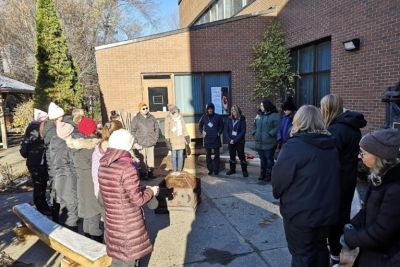
I Saw…
Throughout the two days of the evaluation process, I saw the art of relationship building and storytelling afford the learners, evaluators, project instructors, management, and community members, share genuine connections, commonalities and distinct uniqueness' in their journey of this project. I saw our outdoor space provide opportunity for wonderment and storytelling to come to life. The learners intentionally planned and provided a space for building relationships, wonderment, and curiosity to share their thoughts, ideas, and stories as they build upon their outdoor ideologies. This process of evaluation allowed opportunity to evaluate in the outdoors. It was inclusive of each participants views and ideas, versus a test of right or wrong answers.
I Heard…
This evaluation process allowed for many voices to be heard. We brought together project participants, learners, management, early learning directors, community members (indigenous elders, instructors from other departments etc.) to share their unique perspectives, ideas, and challenges faced over our two-year experience. Laine, one of our evaluators used the term “ecological perspective” to describe the evaluation process– “Bronfenbrenner's ecological systems theory views child development as a complex system of relationships affected by multiple levels of the surrounding environment, from immediate settings of family and school to broad cultural values, laws, and customs.” (Guy-Evans, O (2020), pg. 1). This evaluation process encompassed the many people, layers and complexities of change required for outdoor pedagogy to evolve from “colleges to communities”.
A few comments from leaners and participants during this process included:
Lily (learner) said: Before everyone arrived, Lily demonstrates great curiosity in setting up her provocation - “I wonder if they will play with my provocation?” “I don’t think I have enough set up for my provocation?” “How will they know what to do with my provocation?”

After the experience - “It has helped me understand the joys (and challenges) of being outdoors. I believe this experience was way more enjoyable outside than it would have been inside. Being outside and doing anything with nature makes me feel grounded and connected to the outdoors.”
Lindsey(learner) said: “This experience was totally terrifying as we were setting up our provocations in a newly designed space for “children” that we didn’t know. We took advantage of using the environment as a third teacher and engaged in teachable moments by using lots of loose parts. I took great pride in knowing that everyone really liked our provocation.”
Karen (Dean at NBCC) said “It was a very important day for all of us to share the unfolding of a big idea to the implementation stage. The campus outdoor space is beautiful, created with collaboration of many and led by few. This learning space is just what our students and faculty need to grow. Beverlie, your visionary passion for this project has been integral to the growth of professional experiential learning for our faculty team. Much thanks for your work with our team and freely sharing your learning framework with our students.”
I Feel …
This process has had many heartfelt trials, tribulations, and joyous moments. It has been through all moments and feelings that change can happen – “Trusting the Process”. My discomforts and challenges are like a caterpillar struggling to get out of its cocoon - growing pains in the complexity of growth and learning as I emerge into a new butterfly. I feel the site visit, storytelling, and participating in and with the environment offered unique opportunities to understand many perspectives for authentic discoveries in evaluating this project – the many complex systems involved to create change. I felt honored to share my space and story. I felt joyous to hear my learners question their learnings and to be able to co-construct, mentor and coach newfound ideologies and opportunities to grow. I look forward to seeing and hearing these stories guide us in our next phase.
The Evaluation Experience by Sasha Patterson, YMCA of Southwestern Ontario
As we arrived in Moncton, New Brunswick to begin our site visit with the Lawson foundation I reflected on our visit to YMCA Moncton 7 months prior. The outdoor environment was in flux as spring was starting to make its appearance in New Brunswick and educators were just trained in the Playing to Learn Outdoor Pedagogy session. When I say “just” it is because they had a full day session on the topic only days before our visit. Naturally questions arose as to whether we would see any changes in the attitudes and dispositions of these early childhood educators and if any barriers to outdoor play would be obvious.
The day of the site tour arrived, and our visit was met with uncertainty and a bit of hesitation. These educators and senior leadership had not been a part of an evaluation process prior to this project and questioned what the process would entail. The Lawson foundation evaluators arrived with curiosity and wonderment. They got to hear from the senior leadership team about the evolution of their outdoor spaces, the reaction parents and caregivers have had and the coaching that has been put in place to support their early learning professionals.
Throughout the day we observed children and educators in the outdoor environment, took a tour of the site and pointed out some of the ways in which the child care centre is supporting families. Our question-and-answer period with the evaluators resulted in some great conversations with the CEO, board members and senior leadership around the importance of senior leadership buy-in, sustainability initiatives through funding and the challenges they have faced at relationship building with Indigenous knowledge keepers in the community.
The evaluation experience was a really great opportunity to speak directly to impact of the Lawson foundations funding and the natural progression of the Learning and Teaching Hub model. We spoke at length about the relationship between both the Lawson project as well as the Learning and Teaching hub project through an anonymous funder. The extension of the Lawson work in this new Learning and Teaching Hub model was of great interest to the evaluators as they are eager to see the centres with outdoor pedagogy buy-in advance in their practice and how the two projects may see a correlation in their findings over time.
Over the 12 hour visit and subsequent debriefing we feel confident that the Lawson evaluators got a sense of the passion and commitment our YMCA educators and senior leadership have for outdoor pedagogy. The Moncton YMCA were wonderful partners in showcasing the work we put into our training and created a welcoming environment for the Lawson evaluators to see, discover and wonder all there is to offer at our YMCA child care.
Outdoor Pedagogy Project External Evaluation by Linda O'Donoghue, Bow Valley College
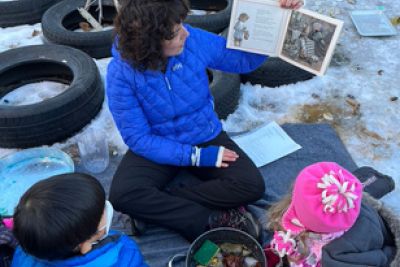
I was unsure what to expect in NB in terms of the evaluation. I first concentrated on situating myself in this beautiful, unknown place & space. We explored our surroundings and enjoyed the beauty. We tried new tastes and began our conversations about the project.
Read full blog...
Woven into My Life by Linda O’Donoghue, M Ed, ECED Program, Bow Valley College
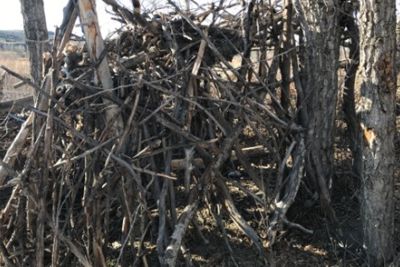
Entering back into the field of ECE to work alongside the children and educators was a daunting challenge within the second phase of the Lawson Foundation Project. An important clue was revealed to me. Perhaps it is my age and a little snippet of wisdom has developed? Regardless, in my encounters with the children, educators, the outdoor play space and sometimes, the parents, I felt joy, despair, exhaustion, amusement, frustration, and wonder. Sometimes this all happened in one day and sometimes, only briefly. However, the children never disappoint. Their curiosity and zest for life lifts me up without fail. Building relationship with children is an art. I was happy that I am still an artist with some skills left in this domain. The children embrace me easily, willingly and it is they who remind me how the outdoors is ‘woven’ within me.
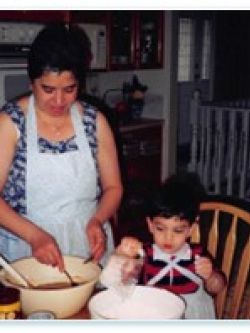
Woven?
I grew up in a small town full of immigrants. My parents immigrated from Southern Italy, along with many of our relatives. While I only have one sister, I have 25 first cousins!! When I think back to my upbringing, what I remember most is playing outdoors - with my cousins, my sister, and our friends. We played in every season, using our imaginations.
Is this unique? I think not. However, the connection I still have to the outdoors has been fostered by my upbringing and culture. Besides playing outdoors, my big, loud, funny, Italian family did a lot outside. Fall is the harvest season, so off my parents went to get tomatoes for canning. Grapes were ordered to make wine. Sausage also had to be made ready, just in case we didn’t have enough food over the winter! While I joke about this, it stems from real life scenarios that my parents encountered in Italy. Slaughtering a large pig in the fall meant plenty of food over the winter months when meat was scarce.
Children were included in the fall harvest, as well as, gathering and preparing food across all the seasons. I did not see it as work, instead it was fun. My parents and relatives would tell stories about their childhoods and all the adventures, trials, and tribulations of growing up in post war Italy.
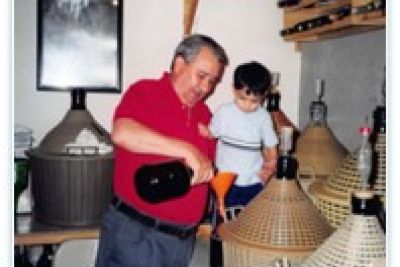
I recently interviewed my mom about her childhood and how she played in the outdoors. This interview with my ‘Ma’ reminds
me that children do not need ‘toys’ to be happy. Children are happiest when they have freedom to choose, to create, to problem solve, and to imagine. The community that surrounds children offers them the opportunities to play and learn.
What does this all mean?
Loris Malaguzzi (1920-1994) once said, “The environment should act as an aquarium which reflects the ideas, ethics, attitudes and culture of the people who live in it. This is what we are working towards.” Reggio.
Children will reveal their ideas if the adults are open and curious. The children remind me that my curiosity is still alive, my playfulness and silliness awakened. Learning need not be so serious or seen as a task to accomplish. The children prompt me again and again that they simply need an environment that allows for trial and error, exploration, and adventure. The outdoors supplies all of this and then some, but it also requires a community of people who support outdoor pedagogy.
Luckily, I have found such a community within this research project. I am supported by this community of practice which has expanded over these past 2 years. I am excited to see how the next phases of the research unfold and for the new learning I will embrace.
Beautiful Chaos and Cozy Disruption by Deidre Craig, BA, CCLS, Faculty - Saskatchewan Polytechnic
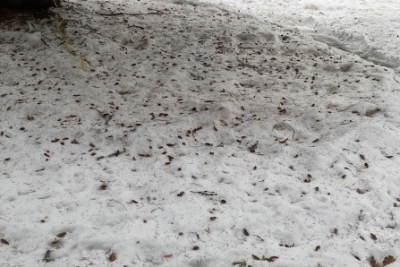
The year that has been is sometimes how I talk and think about the 2020/2021 academic year. Much of the last year has contained elements of chaos, the unknown, anxiety, concern, and disrupted routines. For many of us, this has meant completely new routines. For some there is little that resembles the day to day comings and goings from one and a half years ago. Our campuses are mostly shuttered, students present as wee black boxes on a screen and the gift of relationship has been hard to open or remains untouched on the table. What then is beautiful in this chaos? What then is cozy about disruption?
Over the last year a group of four has become a growing community of practice as we consider outdoor pedagogy and building adult capacity, first with ourselves. We began with chaos- lots of questions toward a new terminology and foundation to work forward with. And the bundled chaos became scattered. We immersed ourselves in current research, challenged one another with reflections and asked a lot of questions. The chaos continued, but in it came beauty. More colleagues joined our meetings, collaborations began, relationships followed, laughter ensued. And we looked forward.
And then kaboom. Like the winter storms experienced in Alberta and Saskatchewan this winter, a new idea blew in “disequilibrium” and “disruption”. These are strong verbs that also double as an intervention, a provocation to move us into deeper thinking. Did I sign up for this? Our intentional assembled group became a Community of Practice bridging thousands and kilometres, a few time zones, and unexpected but welcome partners on the journey of discomfort. This partnership has offered a sense of belonging, mentorship, and engagement (Soto, Gupta, Dick & Applegate, 2019). Disruption provides opportunities for new thinking, for being curious, for consciously considering what I hold to be true about Outdoor Pedagogy and teaching and learning. During this new chaos, I became excitedly unsettled in the same sort of way I am with the changing seasons. In Saskatchewan we have distinct and intensely paradoxical seasons. I look forward to each of them in decidedly different ways. Fall is my favourite and I look forward to the disruption to the warm weather that is the onset of crisp mornings, rosy cheeks, and cozy sweaters. In this project we are in the spring, new growth after the chaos and challenges of winter storms. I am entangled in the seasons and am weathered along with all that is around me in nature (Rooney, 2018). There is comfort for me in this change.
What about change.
Yes, that six letter word. In my personal context, change has never been my favourite. I like stability, as much as there can be with a family of five, and delight in a rootedness. In my professional context however, I enjoy opportunities for continuous learning and growth, so change is much more welcome there. This year we have experienced much change because of external events. But what does it mean? How might I instead interpret or engage with change to consider my own internal transitions from an inquiry and curiosity stance instead.
In play children construct and deconstruct, over and again. They engage their curiosity and wonderment in that active exploration of ideas and items in their environments. As I played with the idea of my own disruption in reflection after a meeting, I was asked “Is deconstruction for children similar to disruption for adults?” I have been enjoying the process of change in my own thinking about disruption. I’ve been tinkering. From a teaching and learning perspective, I have often employed the questions “what do you imagine might happen if?” or “I wonder what you might find if” to disrupt student’s current thought processes. But I had not considered comparing this to the action children engage in their own cycle of inquiry and curiosity (Dietze, 2021) as they deconstruct in play. Children are consistently engaged in beautiful chaos.
The imagery of weather continues to be a metaphor for my learning and in noticing how it is that children are experiencing change around them. “For young children, curiosity is an important way of engaging with the micro-worlds in their immediate surrounds. When children are given the time and space to attend to the happenings in these worlds, possibilities for new and unexpected relations can emerge” (Rooney, 2018, p. 9). This project has gifted me time and space to learn, to enjoy the disruption and to build and reconstructing my knowledge and teaching practices.
Deidre Craig, BA, CCLS, Faculty - Saskatchewan Polytechnic
References
Dietze, B. (2021). Cycle of curiosity. Presentation
Rooney, T. 2018. Weather worlding: learning with the elements in early childhood. Environmental Education Research 24 (1): 1-12.
Soto, M; Gupta, D; Dick, L; and Applegate, M. 2019. Bridging Distances: Professional Development for Higher Education Faculty Through Technology-Facilitated Lesson Study, Journal of University Teaching & Learning Practice 16 (3): 1-19.
Outdoor Learning and Children’s Voices: The Power of Pedagogical Documentation by Heather Fowler BA, MA, Academic Chair: Arts & Community, New Brunswick Community College
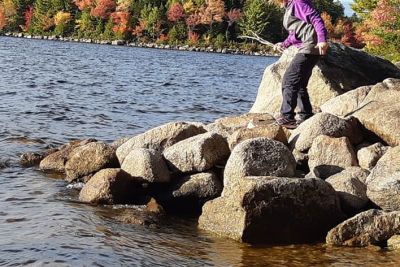
Outdoor experiences have always been a large part of my life particularly as a child and then (unfortunately less so) as an adult. Long summers spent at the family cottage with my extend family from the time school was let out to the time school was let in and seasons in between. We were privileged, though we did not know it at the time, to spend those days learning a multitude of skills that others might not have access too: boating, swimming, fishing, gardening, hunting, climbing, cooking, skiing and even basic house building skills.
We were free range and definitely ‘beyond the fence’. But as we got older those ‘fun’ things made way for the focus and the expectations on academic achievements.
Few things are so important to Parents than the knowledge that their children are moving adequately along the developmental pathway to adulthood: are they performing well against others; are they learning; are they reaching milestones; are they being taught the foundational skills that will hold them steady through the navigation of academic achievement? And most importantly will our children have the skills to be a successful adult?
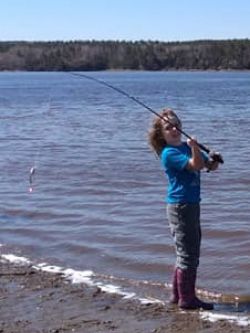
Like many parents today I am a working professional. I don’t have the privilege (for good or ill and probably the former) of being the main educator at home. And while we still have the family cottage, those days are short crammed vacation days. I am the typical parent forager, looking for just the right spot for my child to have a nurturing environment for the day to day. For many, choosing the right early learning environment for your child often comes down to two things: consideration for safety and learning.
So you might ask – how does this all personal reflection relate to an academic project on outdoor pedagogy?
Over the last couple of months our diverse nationwide group has been exploring Outdoor Pedagogy through a Community of Practice. We read, we talk, we review, we reflect, we share, and we push ourselves respectfully out of our comfort zones on a variety of topics. In full disclosure there are times I feel a little like an imposter. I am an Academic of Social Sciences and have been an Academic Chair of Early Childhood Education for over a decade. I also am a passionate supporter of Early Childhood Education pedagogy and in part because I have a child on the autism spectrum. I have learned a lot about Early Childhood Education, but I would not claim I am an ‘Early Childhood Educator.’ Through my lens the power of pedagogical documentation for both educators and parents, particularly in outdoor spaces, continues to resonate with me.
As a social science academic in Post-Secondary environment, I understand the theoretical advantage of observation and pedagogical documentation. That pedagogical documentation is more than a visual history of what the children are doing day to day.
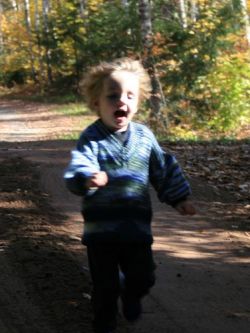
As a parent of a (then) nonverbal child on the autism spectrum, the influence of child centric pedagogical documentation is much more powerfully relevant to me: it provided a window to my child’s learning. It gave a voice to a child that had none at the time. It helped me to see how my child was learning, observing and interacting with the world around her. As stated by McLean (2009), “documentation has the potential to change a parent’s perception of a child—helping them to see these ordinary moments through new eyes, which can lead to a greater understanding and appreciation of their child’s early learning experiences. “ ( p.116)
Early on, one of my child’s favorite Educators told me “Don’t let the labels define her”.
Connecting to my child through her Educators and these pieces of pedagogical documentation helped me see outside the box of labels and imposed expectations. It helped me as a parent to understand what competencies my child already had and the potential that could be. It is something I continuously reflect on to check and recheck my assumptions.
Parents too often look at documentation as a simple accounting of the day. A day that should be focused on the developmental pre academic foundation skills. “What has my child learned today to prepare for school?” This type of documentation would be easier to produce, and quite likely enough for most parents to be satisfied.
For others, documentation can be a glaring gap, another label, another box that highlights visible pieces of what you think your child is not doing masking what they are doing. You can easily miss the richer context of what learning is happening, how that child is experiencing and learning in their environment and how to build upon that learning together.
“The Reggio approach takes the view that children are protagonists in their own growth and development and teachers use documentation as a means of exploring and making visible individual and group learning processes of both children and adults (Infant-toddler Centres and Preschools Istituzione of the Municipality of Reggio Emilia [ICPIMRE] 2010). Children’s ideas are seen as worthy contributions to overall knowledge- building processes.” (Merewether, 2018, p.260)
So how does this context of children’s learning and their role as protagonists relate to Outdoor Play? The most powerful observations of my child’s learning came from watching her engage in outdoor adventurous play. Suddenly those labels and gaps in development, so glaring against artificial academic benchmarks and cultural pressures, did not seem so significant.
It was not only the higher level of engagement in an outdoor environment that was evident in the pedagogical documentation but also how those environments were just as effective if not more in her overall development.
With an obvious wealth of natural sensory opportunities, Educators could see the many ways she engaged in investigating her outdoor environment: her sense of sense of self in shadow play; her exploration of cause and effect in water play; her investigations in the multitude of sticks, leaves and other wonders; her demonstration of a sense of danger in judging safe distances to jump; or her building of self-confidence and motor skills to climb a tree. It was in outdoor play that we saw the biggest shifts from individual play to parallel play to interactive communication with her peers.
Outdoor play offered experiences that she would return to time and time again. Experiences that engaged her outside of her inner world and provoked her to interact. As parents, we could see in the pedagogical documentation her evolving personal interests and leverage those interests to co construct her learning as a team with her Educators at the center and us at home.
Parents need to understand the power of what they see in pedagogical documentation especially in outdoor play. Pedagogical documentation is not only a record of activity but an enriched reflection of their children’s learning, a look beyond the obvious milestones, checkboxes, and a pedagogy of listening. The view it offers into a child’s mind will not only change the way you view your children’s’ learning, but what we traditionally consider meaningful ‘learning’ environments.
Heather Fowler BA, MA, Academic Chair: Arts & Community, NBCC
References:
McLean, C (2019). Co-constructed Pedagogical Documentation in Early Learning Settings: A Parent Perspective. Exceptionality Education International. Vol. 29, No. 3, pp. 113–134
Merewether, J (2018) Listening to young children outdoors with pedagogical Documentation. International Journal of Early Years Education. VOL. 26, NO. 3, 259–277
Community of Practice by Linda O’Donoghue, M Ed, ECED Program, Bow Valley College
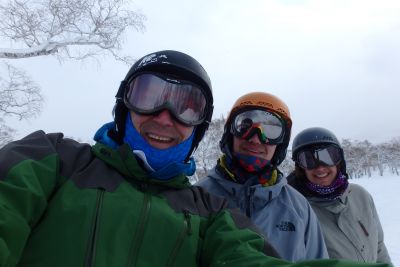
My thoughts about outdoor experiences with children are shifting and changing through my involvement in the community of practicum group. The outdoors has always been part of my personal life with my son and husband and within my culture and family of origin. In my professional life as an ECE my understanding of its critical role for a child’s development and learning is expanding.
I believe that my learning is gaining momentum due to our weekly discussions, readings, and reflections. Much of our ongoing study has confirmed my already existing beliefs on outdoor pedagogy, “The great benefit that outdoor play can offer is a greater diversity of opportunities for rich, integrated play…typically…a more “enriched environment” than indoor settings, and are more likely to stimulate creativity and problemsolving…” p. 2 Loebach and Cox, 2020.
My role as a college instructor is being challenged. I am invited to re-think what it means to be an instructor and how I facilitate learning. Different perspectives and provocations are shared about curriculum delivery, group facilitation, the child’s voice within pedagogical documentation, action research and more! I know that I am being changed through this process as our meetings ‘live’ within me long past our meeting times. I try out new ideas with my students and with my colleagues. Cognitive knots, tension, and joyful discoveries have emerged.
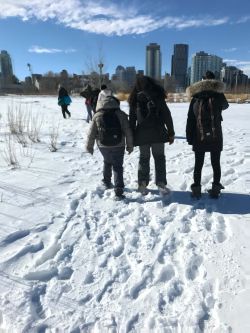
Participating in a community of practice offers me the opportunity to build relationship with the participants and to have ongoing conversations on topics relating to outdoor pedagogy, curriculum, and research. The ability to continue our conversations, reflect on learning, and share experiences is highly valuable and so different than attending a workshop or conference. In the moment the workshop and/or conference content has high impact; yet, it may or may not be sustained within me for the long term. Whereas, this community of practice LIVES with me. I look forward to engaging in the readings and discussions in partnership.
The weekly meetings influence my knowledge about outdoor pedagogy in many ways. My beliefs and knowledge are challenged each week by the questions asked and the diverse theoretical perspectives offered. For example, the notion of pedagogical documentation and the presence of the child’s voice. I began to truly wonder, has the child’s voice been the strongest voice when my students learn about pedagogical documentation?
I appreciate the sharing that happens from the group about their experiences within their particular contexts. We hold many similarities and differences and I find each meeting gives me further insight into our contexts.
My Bow Valley College colleagues are always welcome to join our community of practice and so are other colleagues from all over Canada. It is truly wonderful to meet so many advocates for outdoor pedagogy and their attendance enriches the conversations.
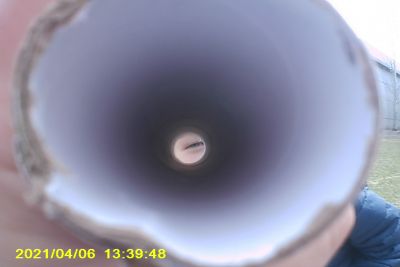
Each person within the community of practice is acknowledged for their skills and expertise regularly which gives energy and positivity to the community. I believe the outdoor pedagogy community of practice allows me to shine a light upon my teaching and learning with my students. What do I do well? Where can I improve? What needs to be changed? How can I give the students a stronger voice? Is my voice too loud? I believe I need to speak less and listen more, “Emergent listening may start out with what is known but it is open to evolving into new ways of knowing and being; it requires ‘courage to abandon yourself to the conviction that our being is just a small part of a broader knowledge” [Rinaldi 2006, 114] cited in Merewether, p. 261, 2018.
To form a community of practice I would recommend that individuals ensure they establish a ‘Vision and Mission’ for the group. Groups need to ask themselves, why does this community of practice exist? What does the group wish to achieve? The community of practice requires guidelines for the group to follow. For example, how often should the group meet, for how long, what commitments are required of the participants? Finally, initiate short term goals for the group to achieve, as well as, long term goals to sustain the learning and momentum of the group.
Linda O’Donoghue, M Ed, ECED Program, Bow Valley College
My Journey with/in Outdoor Pedagogy by Tammie Hachey-Bell - New Brunswick Community College
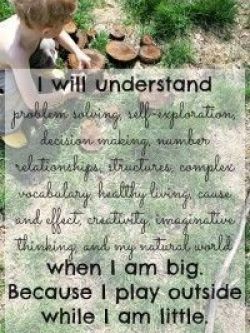
My journey in outdoor pedagogy started as a child. Spending endless hours in the community and sacred places and spaces- in the woods, under the bridge, along the creek etc. Friendships were created - we became part of the environment. As with the Lawson foundation – Outdoor Pedagogy Communities of Practice - we imagined, created new spaces, built upon personal autonomy, and equitable social responsibility within our group. As the seasons changed, so did our knowledge, skills and practices - through and within the outdoors. Our Communities of Practice helps me to vividly remember the smell of the creek cleansing itself as it roared over the rocks or the feeling of love as I had my first kiss under the bridge and returning to the same spot to grieve the breakup of this first love or the eerie yet mystical feeling of catching fireflies after dark. Nature helped me to learn, holistically develop and feel connections of wellbeing, spirituality and citizenship. “Neuroscience studies have also demonstrated that when children play, all areas of the brain “light up”, leading to adaptive and prosocial changes at each of the molecular, cellular, and behavioral levels, reinforcing that play activities can simultaneously foster development and learning across all domains—physical, social, cognitive, and emotional.” (Loebach and Cox (2020), p. 2)
Educators’ Perspectives and Roles in Outdoor Play
Yet, among educators, there has been little time or conversation concerning the planning and preparation for outdoor learning (Davies, 1996; Davis & Waite, 2004; Louv, 2008; Renick, 2009). Research suggests that there is a prevailing belief that outdoor learning requires less time and attention in planning than indoor learning (Davies, 1996; Renick, 2009) and that when children are outside this becomes a time for teachers to take a break and solely ensure that children are safely supervised” (Hunter, Syversen, Graves, & Bodensteiner (2018) p.2)
As I moved into my adult years, I still had a deep love for the outdoors. When I worked as an early childhood educator – my favorite part of the day was when we took the children outside. These were different times (90’s) compared to today. We did not have an operators manual stating how long children had to be outside – but I remember wanting to be outside more frequently than my co-workers – away from the feeling confinements of the indoor space and rigid schedule; yearning for the feeling of zest for life and freedom in being outside WITH the children and being invited into their play (versus inviting them into my play like inside). I was one of the few educators who purposefully planned / set up “activities” throughout all the seasons. Why was this? Then, I just accepted that “I was different”. This journey with the outdoor pedagogy project, has offered the opportunity to reflect, analyze and debunk my perceptions and cultural experiences of being an early childhood educator who valued outdoor pedagogy in a time that did not. “Intentional teaching therefore, should occur throughout the day, in all spaces, with educators continually aware of opportunities for intentionality that arise with children.” (Leggett & Newman (2017) p.2)
Outdoor Pedagogy and Instructing Early Childhood Education Programs
“Frequent and repeated use of the schoolyard for teaching can support student learning and social development” (Feille, K. & Nettles, J. (2017). p. 19)
Outdoor pedagogy has and continues to evolve me and my post-secondary instructing in early childhood education program. Even when it was not required to “teach outside” – I found it refreshing and invigorating to take the students outside to “teach the class”; yet it was not a frequent occurrence. I started to notice, that some students did not share the same excitement as I did being in the outdoors. I was curious as to why students were not transferring their new knowledge of purposefully planning for the indoor environment to the outdoors environment. As I started my journey with the Lawson Foundation Outdoor Pedagogy Project, our community of practice has engaged me to reflect in my own experiences, and gain deeper and diverse perspectives in using outdoor pedagogy to enhance teaching in ECE, provide outdoor places and spaces for ECE students learning, and advocating for changes with/in our college to better prepare our early childhood educator students. I am excited to move forward outdoor pedagogy with faculty, students, community, children and families.
Tammie Hachey-Bell
References:
www. Howwelearn.com. Retrieved April 9, 2021
Dietze, B and Kashin, D. (2019). Outdoor and Nature Play in Early Childhood Education. Pearson. Canada.
Loebach, J., & Cox, A. (2020). Tool for Observing Play Outdoors (TOPO): A New Typology for Capturing Children’s Play Behaviors in Outdoor Environments. International Journal of Environmental Research and Public Health, 17(15), 5611. https://doi.org/10.3390/ijerph17155611.
Leggett, N., & Newman, L. (2017). Play: Challenging Educators' Beliefs about Play in the Indoor and Outdoor Environment. Australasian Journal of Early Childhood, 42(1), 24–32. https://doi.org/10.23965/ajec.42.1.03
Hunter, J., Syversen, K., Graves, C. & Bodensteiner, A. (2018). Balancing Outdoor Learning and Play: Adult Perspectives of Teacher Roles and Practice in an Outdoor Classroom. International Journal of Early Childhood Environmental Education, 7(2) 34-50.
Feille, K. & Nettles, J. (2017). Permission as support: Teacher perceptions of schoolyard pedagogy. Journal of Science Education, 23(3) . https://doi.org/http://ejse.southwestern.edu
Navigating a Journey of Pedagogy by Monique Goerzen - University of the Fraser Valley
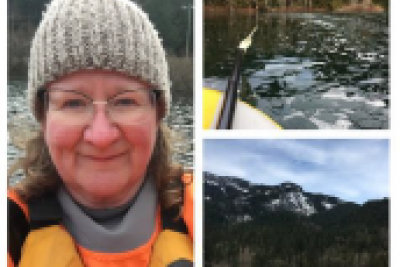
The journey of an educator is an adventure. Some days, the path is concrete, clear, and firm. Other days, the path is indiscernible, a walk through a thicket of brambles with no end in sight. Today, risk as an educator feels inevitable. A pedagogy of play within the postsecondary environment, presents an unexpected adventure playground. Play contributes to the value of leadership and creativity yet remains undervalued as pedagogy for adult learners (Leather, Harper & Obee, 2020).
What are the implications and benefits for implementing a pedagogy of play within a postsecondary early childhood program? The educational journey of students becomes aligned with the cycle of inquiry (Dietze, 2021). The cycle of inquiry and subsequent response to play promotes critically reflective practice and a movement away from reliance on developmental theory to a social constructivist theory. Students are viewed as competent co-constructors of knowledge and make meaning through personal engagement with the environment, relationships, and collaboration (Taguchi, 2009). Play provides positive outcomes in academic performance, mental health, and builds effective relationships (Leather, Harper, & Obee, 2020). These values of relationships, well-being, community, and honoring Indigenous ways of knowing, are key values of the Child, Youth, and Family Studies Department at University of the Fraser Valley.
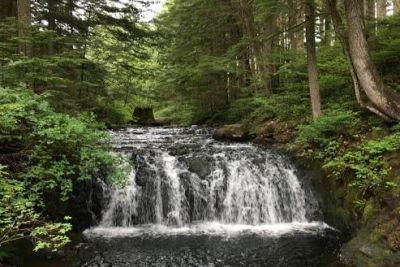
Teaching through play will require me to walk an unknown path. It will require letting go of control, relinquishing the role of educator as expert, and taking on the role of a learner, who walks alongside students as both a peer and a mentor. A pedagogy of experiential play will challenge traditional theories of education that tend to “privilege voices, knowledges, and understandings by suggesting universal ways of thinking about children, educators, and communities, while other perspectives are marginalized or silenced” (Pacini-Ketchabaw et. Al., 2015, p. 24).
The journey of education will be one of walking paths that are well-worn and navigating and creating new paths that may necessitate change and removing of obstacles. I look forward to continuing my walk, acknowledging the role of experiential learning, and being challenged to walk with uncertainty and vulnerability within a community ready to adventure together.
Monique Goerzen
References
Dietze, Beverlie (2021). Cycle of inquiry. Lawson Foundation Outdoor Pedagogy Project. April 12, 2021.
Leather, M., Harper, N., & Obee, P. (2020). A pedagogy of play: Reasons to be playful in postsecondary education. Journal of Experiential Education, 1 (19).
Pancini-Ketchabaw, V. Nxumalo, F., Kocher, L. Elliot, E., & Sanches, A. (2015). Journeys: econceptualizing early childhood practices through pedagogical narration. North York, Ontario: University of Toronto Press.
Taguchi, H.L. (2009). Going Beyond the Theory/Practice Divide in Early Childhood Education: Introducing an Intra-Active Pedagogy. Taylor & Francis Group. Retrieved April 15, 2021, from https://ebookcentral.proquest.com/lib/ufvca/detail.action?docID=446938.
Outdoor Pedagogy Community of Practice – A New Way of “Thinking, Being and Doing” by Cyndi Frizelle, BASC, RECE, YMCA of Southwestern Ontario, Faculty: Fanshawe College
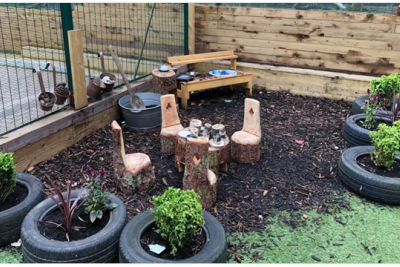
What we know at this moment; what we think we know; and what we desire to learn more about? Intellectual conversations about outdoor pedagogy through a community of practice has deepened my thinking and reflection as a teacher and professional. It has allowed me to evolve even further outside of the classroom walls and construct new ways of thinking, being and doing. It has been a wonderful ongoing experience to discover a vast array of new ideas and practice a growth mindset to sharing and in quality practice of outdoor pedagogy.
Listening not only to the voices of children and families in practice, but it is also imperative that post-secondary faculty, early learning professionals and students entering the field of early learning, recognize the importance of investing time and engagement in a community of practice approach specific to child development and the wonders of learning that naturally takes place in the great outdoors.
The Wonders of the Natural World … What do Children learn?
Children are curious and are natural explorers in the outdoors. They are intrinsically motivated; entering a world of wonder and filled with new and endless discoveries of natural play spaces. It is a “relationship with the land” that sparks curiosity and an eagerness for children to naturally engage with living creatures and loose parts provided by nature. Through weekly discussions in a community of practice, I recognize even more the importance of the place and space as a key component in our enriched conversations of outdoor pedagogy.
Creating a safe environment or children to explore in nature is key. Natural loose parts and tiny living creatures are everywhere. Experiencing the daily and seasonal fluctuations of the weather, exploring the play affordances of natural environments, practicing self-management skills and simply being in nature are essential. The fundamental elements of earth, air, fire, and water are core to the experience (Knight, 2011b; Williams-Siegfredsen, 2012). These experiences are promoted by a pedagogy that values children and incorporates a child-led ethos (Knight, 2009).
We aspire to do what is in the best interest of children. We aspire to listen to their voices, observe their natural curiosity, make their learning visible through documentation and scaffold that learning even further. However, Waller (2007) asserts that there is limited guidance for teachers about their pedagogical role in such settings and how natural spaces function as learning environments. The children’s narratives were central to the evolving curriculum process and he described ‘a sustainable participatory culture with children, leading to the construction of knowledge through shared reflection and collaborative enquiry’ (Waller, 2007, p. 404).
To have quality outdoor pedagogy, we need highly qualified educators that lead outdoor play through mentorship and partnerships with the children, the materials available and the outdoor space. In practice a teacher is ‘a co-constructor, coach and facilitator, and they need to be sensitive as to when they should step into an activity or game, and when to step back from it and allow the children time on their own’ (Williams-Siegfredsen, 2012, p. 37).
A highly qualified early childhood workforce is critical to the healthy development and education of young children. This workforce has not only knowledge and skills related to child development and early learning, but also linguistic and cultural competencies that meet the needs of an increasingly diverse population (Rhodes & Huston, 2012). My journey thus far, clarifies even further that there are essential conversations that need to occur in relationship to acknowledging the context of place and space. Our communities are diverse and represent many cultures and practices. How does outdoor pedagogy need to be reconsidered in these environments? Do we need to research deeper, strengthen our relationships and have a clearer understanding of these communities that children explore?
It is even more evident that invested time and critical conversations deepen our thinking and challenge our practices with children and with each other - collegially. A “one approach only mindset” is not effective to facilitating outdoor pedagogy and will hinder and limit everything that is possible in outdoor learning and for the developing child. There is greater learning to be shared and an immense need to continue the deep enriching conversations.
Cyndi Frizelle, BASC, RECE, YMCA of Southwestern Ontario, Faculty: Fanshawe College
References:
Knight, S. (2009). Forest schools and outdoor learning in the early years. London: Sage Publications
Knight, S. (2011b). Risk and adventure in early years outdoor play: Learning from forest schools. London: Sage Publications
Rhodes, H., & Huston, A. (2012). Building the Workforce Our Youngest Children Deserve. Social Policy Report. Volume 26,
Number 1. Society for Research in Child Development.
Waller, T. (2007). The trampoline tree and the swamp monster with 18 heads: Outdoor play in Foundation Stage and Foundation
Phase. Education 3–13, 35(4), 365–377.
Williams-Siegfredsen, J. (2012). Understanding the Danish forest school approach. Oxon, UK: Routledge.
Challenging Practice through Inquiry by Jenny Britt, MPE., BEd., YMCA of Southwestern Ontario
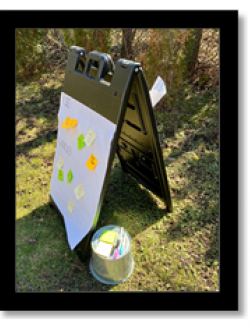
When engaging in reflective thinking about how learning becomes visible in outdoor pedagogy, we are immediately drawn towards children. Children are our most natural researchers; they wonder at the whistle of the wind, investigate the textures of the mud, and study patterns on the leaves as part of their daily work. Questioning the who, what, where and why is innate within children as they make sense of the world around them (Renick, 2009). This curiosity is central to continued interest and engagement in outdoor learning throughout early childhood, and therefore needs to be supported by early learning professionals (Reckwitz, 2002).
Embracing children through this lens allows for more authentic storytelling of the aha moments and wonderings that arise during rich outdoor play experiences. As the most important priority within our field, we focus our attention on how to translate children’s learning in a way that can be seen by others. With so much effort and intentional thinking towards this, we can inadvertently lose sight of ourselves in this process. How are we making the investigations, aha moments and challenges to our assumptions visible through our own work and learning?
When engaging in a community of practice that supports disequilibrium, challenging of assumptions and furthering learning – it becomes more familiar and welcomed in our practice. Given the geographical and contextual differences of the participants within the community of practice, the knowledge, assumptions, and practices connected to outdoor pedagogy are that much more diverse.
Feldman (2020) acknowledges that this is a central part within communities of practice. Those who participate in this type of social learning can “re-invigorate rather than recycle old ideas” (Feldman, 2020) and we see a clearer shift in their roles from a peripheral observer to more of a leader in research and reflective practice (Hunter, Syversen, Graves & Bodensteiner, 2020). When we go through a significant change or shift in practice we need to “interrupt or disrupt the routinization of practice” so that reflection can occur beyond the surface level (Green, 2009; Feldman, 2020).
In our outdoor play space, photos, artifacts, and pedagogical documentation showcases the deep investigation that occurs with young children. When I look at my workspace, where I grow, experiment, and investigate outdoor pedagogy- where are these artifacts of my learning? Posters, quotes, and sticky notes filled with other’s wisdom cover my walls, however as I move through new learning within this community of practice- how is this made visible in the places and spaces most central to me?
Reflecting on the cycle of inquiry and the cycle of curiosity, these models act as an integral tool for conceptualizing the pathway of scaffolding inquiry related to outdoor pedagogy (Dietze, 2021). Since being introduced to these models, it has allowed for visualizing the complex thinking and investigation that occurs during inquiry.
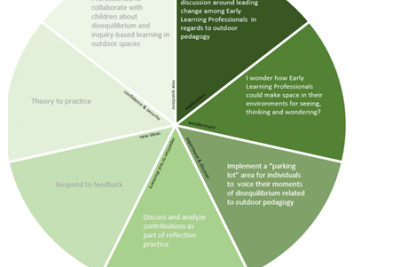
In figure 1, you will see a representation of how I was able to portray my translation of theory to practice through the learnings and aha moments I have experienced as part of this community of practice. This process of inquiry stemmed from a discussion around leading change in outdoor pedagogy.
Striving to make inquiry and curiosity visible through the context of our outdoor play spaces is an area that demands continual reflection. Having a safe space within this community of practice, that is rooted in inquiry-based learning and reflection helps to perpetuate thinking that goes outside of our comfort zone (Feldman, 2020). If adults are to act as the catalysts for fostering environments that support inquiry-based learning, then we need to magnify our own seeing, thinking, and wondering.
I have the privilege of having a “not so silent” member of our community of practice, an infant daughter with whom I am able to witness firsthand some of the translation of theory to practice. Together we investigate the best recipe for mud pies, question why the wind moves the tree branches and tinker with loose part materials in new ways, among many other things. Being part of a community that welcomes disequilibrium, uncertainty and strives to challenge assumptions regarding outdoor play pedagogy has fostered a new lens within both my personal and professional practice. As I am discovering firsthand with my daughter, venturing off the beaten path to investigate the unknown is often what leads to the best discoveries.
Jenny Britt, MPE., BEd., YMCA of Southwestern Ontario
References
Chakravarthi, S. (2009). Preschool teachers’ beliefs and practices of outdoor play and outdoor environments. Unpublished doctoral dissertation, University of North Carolina at Greensboro.
Dietze, B. (2021). Cycle of curiosity. Presentation
Feldman, J. (2020). The role of professional learning communities to support teacher development: A social practice theory perspective. South African Journal of Education, 40(1)
Green, B. (2009). Understanding and researching professional practice. Rotterdam, The Netherlands: Sense.
Hunter, J., Syversen, K. B., Graves, C., & Bodensteiner, A. (2020). Balancing Outdoor Learning and Play: Adult Perspectives of Teacher Roles and Practice in an Outdoor Classroom. International Journal of Early Childhood Environmental Education, 7(2), 34–50.
Reckwitz A. (2002) Toward a theory of social practices: A development in culturalist theorizing. European Journal of Social Theory, 5(2):243–263. https://doi.org/10.1177%2F1368431022222543
Renick, S. (2009). Exploring early childhood teachers’ beliefs and practices about preschool outdoor play: A case study. Unpublished doctoral dissertation, Texas Woman’s University.
Are Children Visible in their Outdoor Playspaces? by Jennifer Gilbert, RECE, YMCA of Southwestern Ontario
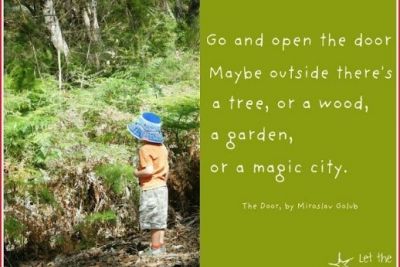
We often ask those in our programs and classes to think back to when they were a child and reflect where they played the most. Many will say they played outdoors, for long periods of time, only going home once the street lights came on. They remember the smells, the sights and who they were playing with quite vividly. Margaret McMillan (1919) believed the greatest classroom for children was the outdoors. Froebel believed the outdoor learning environments offer children freedom to explore and discover, with wondrous opportunities to play. So, if we agree and believe this is true, how do we ensure that the children of today have the same opportunities to develop a relationship within their outdoor environments ensuring a long-lasting love of nature and the opportunity to experience environmental stewardship, learning to care for the natural world?
Let’s talk about playgrounds for a moment. Traditionally, we think of designated large open spaces and climbers, swings or merry-go-rounds. We have many great minds to thank for the creation of the playground, but the most prominent figure in their development was Friedrich Froebel. His conclusions about a holistic, physical and mental approach to health as an important helped lead to the development of the first playgrounds. I ask you to think about this though, what do playgrounds look like today? How do we identify outdoor playspaces for children? How are they learning to make a connection with the outdoors within their communities? And how do we ‘see’ the children in these spaces?
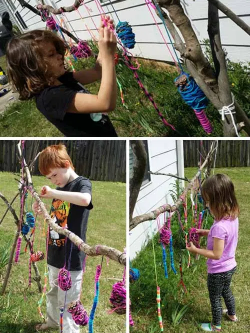
From a constructivist approach, early learning teachers serve as provocateurs and facilitators to support children in identifying interests and in experiencing rich and intriguing explorations and discoveries. Constructivism refers to knowledge that is acquired through active involvement with content and experimentation (Kashin, 2009). To “see” children in their environments, we have to understand the concept of play-based learning. Play-based learning has been described as an approach to teaching that involves playful, child-directed elements along with some degree of adult guidance (Pyle & Danniels, 2016). Early learning professionals are critical to the process and the outcome of play. Observing, being sensitively involved, and carefully guiding, extending and scaffolding play are all part of the play partner’s responsibility. “The early childhood curriculum builds on the child’s own experiences, knowledge, skills, attitudes, needs, interests and views of the world within each particular setting. Children will have the opportunity to create and act on their own ideas, to develop knowledge and skills in areas that interest them.” (Te Whariki: Early Childhood Curriculum, New Zealand Ministry of Education, 1996).
When we listen carefully to what the children are saying, we may hear a new interest emerge and then with this new information, additional props can be added to extend their learning. In the outdoors, some of these props should be items of nature. Sticks, leaves, earth, branches, plants, flowers, trees, grass, water, stones, rocks to name a few. We want early learning professionals to have as much material in their outdoor playscapes to accommodate the children’s current interests as they do in the indoor environments. When this is achieved, we begin to ‘see’ the children in their environments. They feel connected to the outdoor playscape in a way that supports maximum learning and development. We hear their laughter at a new discovery or watch the intensity on their face as they master a new skill. We watch the relationship between the children develop over shared interests because their interests are considered paramount in the outdoor spaces they inhabit.
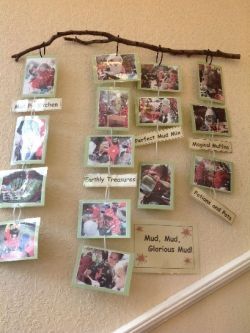
They can explore, be messy, be as loud as they want, take risks, tinker, and connect with nature – hear the birds sing and the leaves rustle, see a spider web glistening with early morning dew, have time for stillness and connection, smell the clean freshness of the soil after a spring rain.
We can also ‘see’ the children through pedagogical documentation. By observing and interpreting what children do and why they do it we begin to see the connection between thinking and questioning. This shows or makes visible the way children are making meaning of their learning or of their interaction with the world. The document Learning and Caring with Infants and Toddlers, Government of New Brunswick, 2005, says the pleasure and joy of feeling the warm sun or seeing the first flurry of snow creates memories for all of us. Children love to share these moments with the adults in their lives. Some ways to collect documentations are photos and video recordings of children, observations and stories of children’s learning, samples or artifacts of projects, investigations and representations, contributions from families, and individual and collaborative works. When we give our children the opportunity to connect with the natural world, we are gifting them with the opportunity to be attached to those spaces and continue to build relationships both in them and within them.
References:
Dietze, B., & Kashin, D. (2019). Outdoor and nature play in early childhood education. Pearson Canada Incorporated.
Council of Ministers of Education, Canada. CMEC Statement on Play-Based Learning https://www.cmec.ca/en/
Dietze, B., & Kashin, D. (2012). Playing and Learning in Early Childhood Education. Pearson Canada Incorporated.
Martin, S., & Huggins, L. (2015). YMCA Playing to Learn, A YMCA Guide to quality care and education of young children. Published by the YMCA of Greater Toronto.
Pictures sourced at: https://www.pinterest.ca/pin/262756959479549964/?autologin=true
Interrogating Disconnectedness by Henna Viertio, Bow Valley College
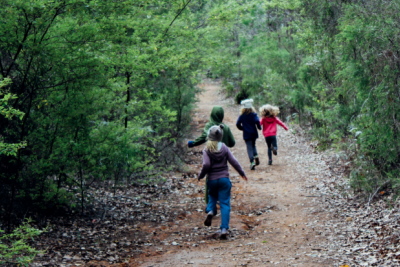
Being an educator is an interesting and exciting, yet at times very challenging and overwhelming path. Teaching outdoor pedagogy to early childhood education students on-line has not been an easy task and I have felt significant disconnectedness within the learning environment. I have struggled to get my students to participate and contribute to the learning exchange. I believe that real reflexivity and deep learning happens through dialogue and social interaction. In my mind, action research is connected to reflexivity, and aligns with social constructivism and Freire’s (1992) pedagogy of hope that views teaching as a “co-operative activity involving respect when people work with each other.” This value is grounded in the philosophy of “emancipation through the empowerment of dialogue” (p. 2). Children co-create knowledge within their play and learning environment. Ideally, early learning teachers listen to the children’s voices and embrace the challenges that children offer that may trigger a reconsideration of ways in which play opportunities are offered and implemented. Collaborative action research refers to research method that is conducted by teams for the purpose of improving group experiences and in contributing to the professional learning of the researchers (Ferrance 2000). An example of this can be a group of early learning teachers and children who have an interest in examining a common question that evolves from children’s play experiences or observations of the environment. This can also be seen as an example of the cycle of inquiry (Dietze & Kashin, 2019).
As someone who grew up in a Finnish forest, I am deeply passionate about outdoor pedagogy and feel fortunate to be learning from powerful, influential pedagogists from across Canada, including Dr. Beverlie Dietze, as I attend weekly meetings on the importance of nature and outdoor play. The discussions around creating more awareness on how nature and outdoor play enhances, and is crucial, for children’s well-being, development, and happiness, have been deeply inspiring, educational, and helpful for me as an educator.
I have struggled to ignite the fire in my outdoor practicum students. However, I experienced a break-through with my group recently. To break the ice and to encourage connection, not only to each other during our seminar, but to everyone’s own individual presence and experience within nature, I chose to do something different. I invited my students to step outside, sit or lie down on natural ground and think about a childhood memory that occurred in nature. The sharing of experiences was deeply emotional and spiritual. Rovai (2002) proposed that emotional and spiritual connectedness might provide support within an online learning program and to increase learning. Based on the literature, he described a sense of community as encompassing “mutual interdependence among members, connectedness, trust, interactivity, and shared values and goals” (p. 321). He proposed how connectedness in a learning community might lead to feelings of safety and trust, which might lead to the freedom to speak openly, which in turn might make students more likely to be open to acknowledging knowledge gaps, and respectfully supporting their peers to learn. My students became much more excited and motivated about their learning and through connecting to their own childhood experiences in nature felt reminded of the importance of outdoor play and experiences.
I am learning that to be ‘a teacher at heart’ encouraging transformational learning, we must be truly present, with almost childlike enthusiasm and passion for our subjects and deep interest in our students’ thoughts and understandings, and to have courage to be vulnerable and willing to truly participate in the art of the learning exchange. This takes deep self-awareness and confidence, which some days I feel I have and on other days, well, not as much. And as Loris Malaguzzi identified in 1942, as quoted by Edwards et al. in 1998, the role of a teacher as a co-inquirer and stated: “Learning and teaching should not stand on opposite banks and just watch the river flow by; instead, they should embark together on a journey down the water. Through an active, reciprocal exchange, teaching can strengthen learning how to learn” (p. 134).
Henna Viertio
References:
Dietze, B. & Kashin, D. (2019) Playing and Learning in early childhood education. 2nd ed. Canadian Early Childhood Education Collection. Pearson Canada.
Edwards, C. P., et al. (1998) The hundred languages of children: The Reggio Emilia Approach. Greenwood Publishing Group.
Ferrance, E. (2000). Action research. LAB: A Program of the Education Alliance. Northeast and Island Regional Education Laboratory at Brown University. Providence, RI.
Freire, P. (1992). Pedagogy of hope: reliving pedagogy of the oppressed. New York: Continuum Publishing Company
Rovai, A. P. (2002). Sense of community perceived cognitive learning, and persistence in asynchronous learning networks. The Internet and Higher Education, 5(4), 319-332. doi:10.1016/S1096-7516(02)00130-6
Sensory Learning and the Outdoors by Sasha Patterson, YMCA of Southwestern Ontario
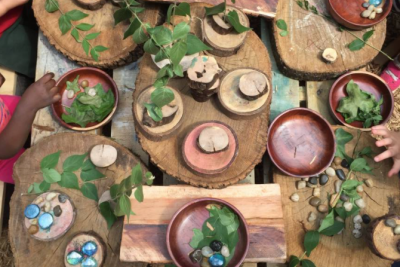
Sensory exploration is one of the most important ways that children in the early years make sense of the world around them. The use of materials that stimulate the senses (sight, touch, hearing, taste, and smell) is as important as the physical environment. The ultimate source for sensory exploration is, you guessed it, outdoors! Pinecones, gravel, feathers, water, mud it all provides the natural loose parts that create endless possibilities for play. Sensory play allows children the opportunity to create, investigate and explore. What better place for freedom of exploration then in the natural environment?
So, how can we use the natural space to engage in sensory learning? Well, children are drawn to that which sparks curiosity (clay becomes malleable in water) and experiences that engage problem solving and reasoning skills. “Play with natural elements, such as water, sand, and clay, fosters critical thinking by providing children the opportunities to use their senses in novel and meaningful ways.” (Beloglovsky & Daly, 2018). Research shows that sensory play builds nerve connections in the brain’s pathways, which leads to children completing more complex learning tasks. If we allow for more sensory experiences in the outdoor environment, we are encouraging children to take on more complex tasks in the outdoor space as well. Building complex structures out of sticks, moss and other loose parts is a skill that may take gross and fine motor practice. Including sensory learning in our outdoor environments can actively engage in that practice and skill in the day-to-day lives of children.

Working, playing, and living in all types of weather and environments provides further opportunity to experience sensory play. Snow, rain, mud, flowers each contribute to the learning environment through the senses. If we encourage jumping in puddles, planting flowers, or shaping snow we are enabling children to improve their social development, cognitive growth, and motor skills. Providing the natural space and materials for such development is an important part of learning in the outdoors and should not be overlooked. How can a seed, soil and some water invite children to learn? What questions will they ask themselves and others about the outdoor world? What scaffolding of learning can we uncover when we allow them the space and opportunity to explore?
“Children are more curious about, and interested in, natural spaces than pre-fabricated play structures. Children who engage in active outdoor play in natural environments demonstrate resilience, self-regulation and develop skills for dealing with stress later in life.” (Floyd M.F., Bocarro J.N., Smith W.R., Baran P.K., Moore R.C., Cosco N.G., Edwards M.B., Suau L.J., Fang K. 2011). Children need environments they can manipulate, invent, and construct. Sensory stimulation allows for a richer experience in these environments because the connection between the outdoor and the sight, sound and feel of it bridges the emotional gap. Creating an emotional sensory response to the outdoors (the smell of fresh cut grass in the summer, toes squishing in muddy puddles) creates a connection to the outdoors that may not exist without the sensory experience. A bond is formed between the child and the outdoor environment in these cases because their experiences create a memory and feeling they will want to relive and experience again.
As Educators our role is to create provocations that allow children to use their natural inclinations toward sensory experiences as a jumping off point for the love of the outdoors. Natural spaces create a unique opportunity to engage all our senses at once so that when we establish the importance of outdoor play, we are also shining a light on sensory learning. “These relationships can be discovered, tested and understood hands-on, the way children learn best. With a higher level of complexity and variety, nature offers the materials that support longer and more complex play”. (White & Stoecklin. 2014)
The value of sensory play in the outdoors needs to be highlighted so that more educators, community leaders and government agencies see the significant impact it has on children’s movements, critical thinking, problem solving and social interaction. If we effectively communicate how sensory learning creates endless possibilities in our outdoor environments, we have given precedence to including it in our practice.
Sasha Patterson
References:
Beloglovsky M., Daly L., (2018) Loose Parts : Inspiring Culturally Sustainable Environments. Redleaf Press 115.
Floyd M.F., Bocarro J.N., Smith W.R., Baran P.K., Moore R.C., Cosco N.G., Edwards M.B., Suau L.J., Fang K.(2011) Park-based physical activity among children and adolescents. Amer. J. Prev. Med;41:258–265
White, R. & Stoecklin, V. (2014). Children’s outdoor play and learning environments: Returning to nature. Accessed 2015 at www.whitehutchinson.com
Podcasts
Early Childhood Education Outdoor Pedagogy Okanagan Study Tour March 2022
Podcasts with Connell Smith from the ECE Okanagan study tour.
Conversations with Audrey Hystad, Farm Program Manager at The Clubhouse Farm
Agents of change - the importance of outdoor play and community.
Conversations with Dr. Beverlie Dietze and participants of the ECE study tour in Kelowna, BC
Conversation with Dr. Debra Harwood.
Conversations About Outdoor Pedagogy in College ECE Programs Podcasts
Podcasts with Connell Smith and ECE college faculty.
Conversation with Dr. Beverlie Dietze, Director of Learning and Applied Research at Okanagan College
Conversation with Deidre Craig, BA, CCLS, Faculty - Saskatchewan Polytechnic
Conversation with Cyndi Frizelle, BASC, RECE, YMCA of Southwestern Ontario, Faculty: Fanshawe College
Conversation with Sasha Patterson, YMCA of Southwestern Ontario, Outdoor Play Specialist
Conversation with Jennifer Gilbert, YMCA of Southwestern Ontario, Faculty: Fanshawe College
Conversation with Monique Goerzen, University of the Fraser Valley
Conversation with Linda O'Donoghue M. Ed, Faculty - Bow Valley College
Conversation with Tammie Hachey-Bell, DEDC, B.Sw, M.Ed., Instructor: New Brunswick Community College
New Brunswick Community College Early Childhood Education student experiences.

